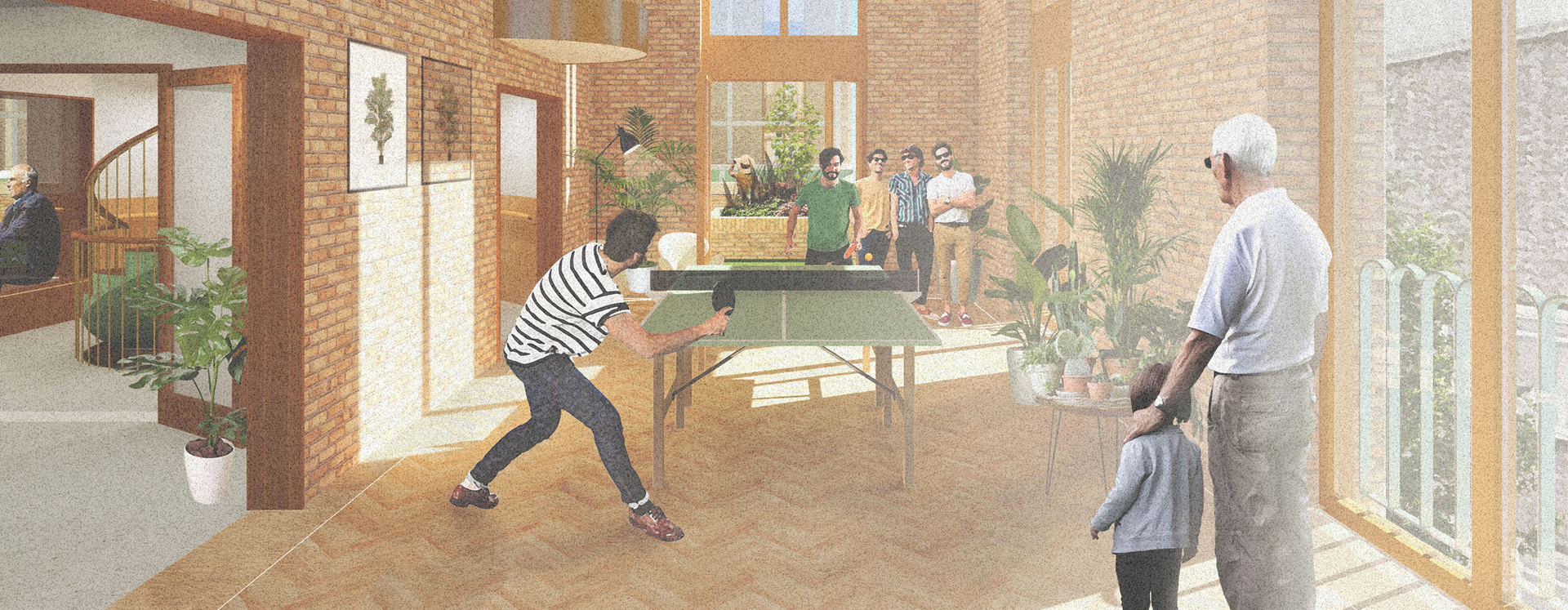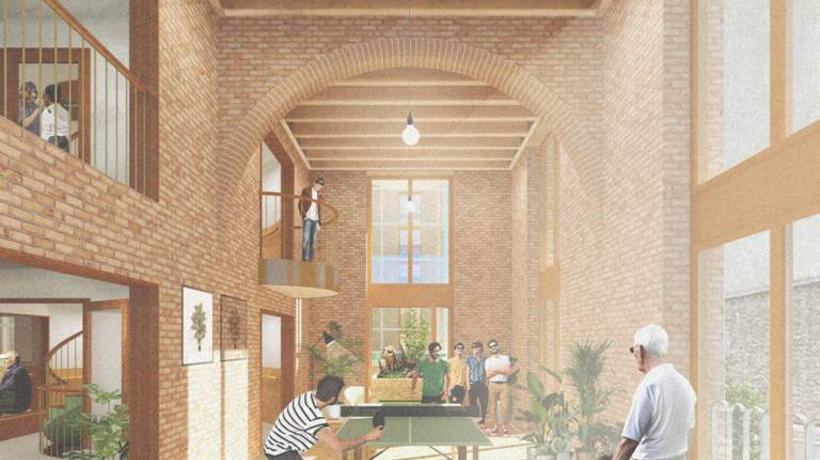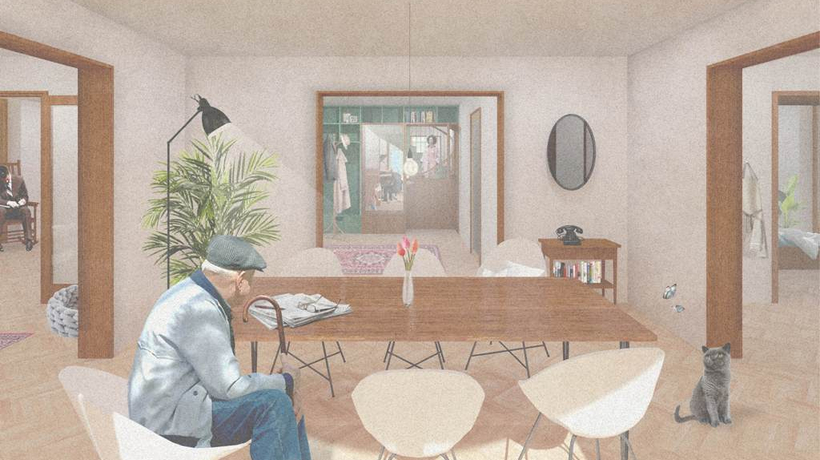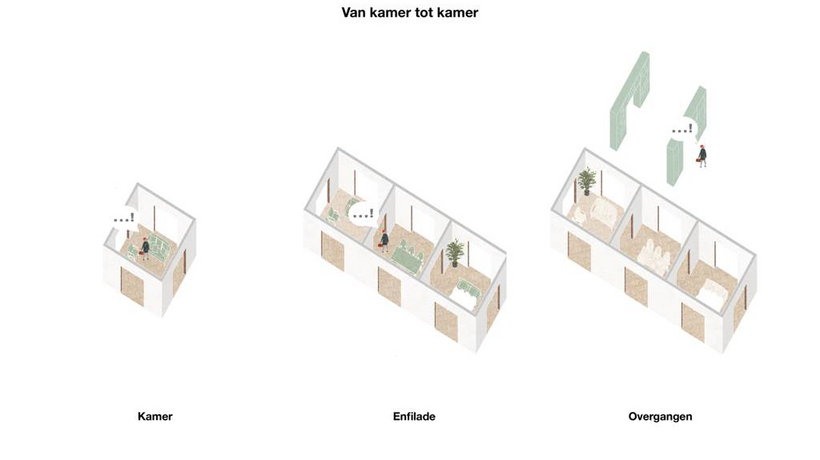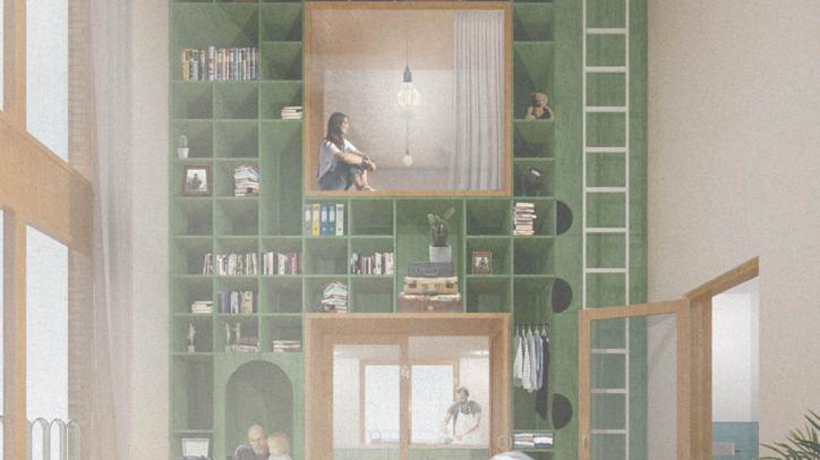From one Room to Another
Christiaan Schuit (Master in Architecture): 'From One Room to Another (Van Kamer tot Kamer) is an alternative to the current residential environment of people with dementia. Due to the major changes in our healthcare system, this exponentially growing and vulnerable target group is at risk. Increasing cuts are being made to the healthcare setting and living environment of care homes, which is resulting in dementia-unfriendly living conditions. At the same time, higher care needs assessments are leading to delayed admission to care homes, as a result of which this target group is forced to live at home increasingly longer. That while this environment is not designed for dementia; it is an unsustainable situation for all parties concerned.
Imagine if we, as society, together decided to no longer admit people with dementia to care homes at all, but to let them live at home. How would we then connect them with their residential environment: collective and public space, neighbours, friends and family, and what does this mean for the spatial qualities of the home and residential environment?
This question interested me because I have experienced what it’s like to live with dementia at close hand. Two of my grandparents suffer from Alzheimer’s disease, a frequently occurring form of dementia, and have therefore lived in a care home for a long time. It was a residential environment with long, confusing corridors, dark spots and offer little room for social contact. They slowly lost their connection with their environment here. As a designer, I felt compelled to go in search of an alternative with an understanding of dementia.
This alternative resulted in a new dementia-friendly residential environment in the Spaarndammerbuurt district in Amsterdam, which places the emphasis on making connections by means of a series of ensembles. Together, they will form a safety net in the neighbourhood. This residential environment will stimulate relationships and encounters with the neighbourhood, so that people with dementia will remain connected with their living environment. At the same time, the design will give something back to the neighbourhood: an inclusive city.’
Recommendations
From the jury report of the Graduation Prize: 'Using an extremely personal experience as point of departure, Christiaan Schuit manages to develop his project From One Room to Another into an assignment that is uniquely relevant to society. He designs his building for people with dementia with so much detail, and in such a loving way, that it is convincing on all fronts. His research is layered and comprehensive, even demonstrating an eye for the surroundings of the building that he has designed. Personal, unifying, innovative and socially relevant: From One Room to Another is a project to cherish in every way.'
Henri Snel, expert in Alzheimer’s disease, PhD candidate Vrije Universiteit: 'Christiaan manages to create social connections through architectural means on different scale levels and thus stimulates relationships and encounters with the neighbourhood, so that people with dementia remain connected with their living environment in all kinds of ways, which is an essential element for enhancing the quality of life. (...) This design provides a very good insight into the urgent problems that we need to acknowledge as a society, which we are responsible for together and which we need to bear responsibility for. This forward-looking design invites debate and must be placed on the political agenda (...) in order to create an inclusive society that bears responsibility for everyone, thus also for people with dementia.’
Albert Herder, lecturer Academy of Architecture: ‘Christiaan’s work is highly socially engaged. His structure takes place on the basis of human perception. He develops a self-organised system with a strong belief in a collective concept. Christiaan’s power is that he works on the basis of his intuition. His design consists of a number of well-chosen, but subtle, interventions. He definitely lives up to his strong belief in a collective concept and also provides an answer to making healthcare affordable. His architecture is effective and sympathetic in terms of atmosphere and appearance. The presentation of his plan gives a clear picture of the project and is very convincing. The project is explained by means of impressive scale models, drawings and impressions. It is a very beautiful coherent plan, full of contextual and sensory aspects.’
A project of:

Christiaan Schuit
